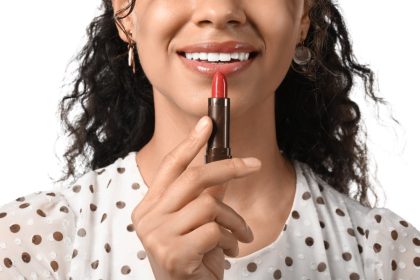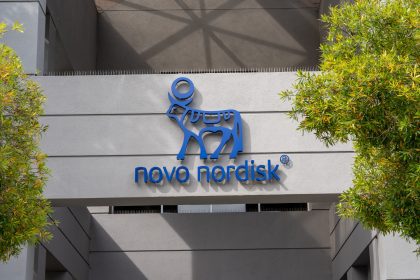Remember when your skin bounced back instantly after a smile or frown? When your joints didn’t make those weird creaky noises every time you stood up? You’re not imagining things — your body’s collagen production is literally declining as you read this. Starting in your mid-20s, collagen synthesis drops about 1% each year, like a slow leak in your youth balloon.
Before you spiral into an existential crisis, there’s good news. While you can’t completely stop this natural process, you absolutely can slow it down and boost your body’s collagen-making machinery without expensive injections or sketchy supplements. Your skin, joints, and even gut lining will thank you for the natural support.
The vitamin that’s secretly running the collagen show
If collagen were a movie, vitamin C would be both the director and producer. Without enough of this crucial nutrient, your body literally cannot create new collagen — full stop. Vitamin C isn’t just a nice-to-have for collagen synthesis. it’s absolutely non-negotiable.
This vital vitamin works like a master craftsman, stabilizing and cross-linking the amino acids that form collagen’s triple-helix structure. Without enough vitamin C, you end up with fragile, malformed collagen that breaks down easily, leading to all those visible signs of aging we’re trying to avoid.
The solution seems obvious — load up on vitamin C-rich foods daily. Bell peppers actually contain more vitamin C than oranges, with one red bell pepper providing about 170% of your daily needs. Strawberries, kiwis, broccoli, and kale are also stellar sources that support your skin from the inside out.
For maximum benefit, eat these foods raw or lightly cooked when possible. Vitamin C is notoriously fragile and can be destroyed during high-heat cooking methods. That morning glass of orange juice that’s been sitting in your fridge for days? It’s probably lost a significant amount of its vitamin C potency already.
The amino acid trinity your skin is begging for
Collagen is a protein, which means it’s made of amino acids — specifically glycine, proline, and hydroxyproline. Think of these as the building blocks your body needs to construct new collagen fibers. Without enough of these raw materials, your collagen factory sits idle.
Glycine, the simplest amino acid, makes up about one-third of collagen’s structure. Your body can produce some glycine on its own, but often not enough to optimize collagen production, especially as you age. Foods like bone broth, chicken skin, and pork rinds are particularly rich in glycine and other collagen-specific amino acids.
Proline works alongside glycine to stabilize collagen’s structure. Egg whites, dairy products, mushrooms, and asparagus all provide this crucial amino acid. For vegetarians and vegans who avoid bone broth and animal proteins, focusing on these plant sources becomes even more important.
The most efficient way to get all three key amino acids together is by consuming collagen-rich animal parts that most modern diets typically discard — like chicken feet, fish skin, and beef knuckles. Our ancestors’ “nose-to-tail” eating style naturally supported their collagen production in ways our boneless, skinless chicken breast diets don’t.
The minerals turning your collagen switch to “on”
Even with plenty of vitamin C and amino acids, your collagen assembly line needs specific mineral cofactors to operate smoothly. These unsung heroes enable the enzymes that weave collagen fibers together.
Zinc plays a critical role in every stage of collagen synthesis and protects against enzymes that would otherwise break down your existing collagen. Oysters are the zinc superstars, but more accessible sources include pumpkin seeds, crab, beef, and lentils for plant-based eaters.
Copper activates an enzyme called lysyl oxidase that’s crucial for linking collagen fibers together, creating strong, resilient tissue. Without enough copper, collagen fibers remain fragile and disconnected. Liver is exceptionally rich in copper, but dark chocolate, sesame seeds, and cashews also provide this mineral.
Silicon, often overlooked in nutrition discussions, is essential for collagen formation and activating enzymes that help prevent breakdown of existing collagen. Foods naturally high in silicon include green beans, bananas, brown rice, and mineral waters. Your grandmother’s recommendation to take horsetail tea for beautiful skin and hair might have been onto something — this herb is exceptionally rich in bioavailable silicon.
The sun sabotage you’re probably ignoring
Here’s an inconvenient truth — all the collagen-boosting nutrients in the world can’t compete with unprotected sun exposure. UV radiation activates enzymes called matrix metalloproteinases that literally chew up your precious collagen fibers like tiny pac-men.
Just 10 minutes of intense midday sun exposure can lead to significant collagen breakdown. The damage isn’t immediately visible, which makes it easy to ignore, but it accumulates silently beneath the surface, showing up years later as wrinkles and sagging.
Daily sun protection isn’t just for beach days or summer months. Those UVA rays penetrate clouds and windows year-round, steadily degrading your collagen even during winter and on cloudy days. Mineral-based sunscreens with zinc oxide or titanium dioxide provide broad-spectrum protection without potentially hormone-disrupting chemicals.
Wide-brimmed hats, sunglasses, and seeking shade during peak hours provide additional protection. Think of it this way — what’s the point of boosting collagen production if you’re simultaneously accelerating its destruction?
The surprising inflammation connection
Chronic inflammation is essentially collagen’s kryptonite. Inflammatory compounds trigger those same collagen-destroying enzymes we mentioned earlier, accelerating breakdown and inhibiting new collagen formation. The tricky part? Much of this inflammation flies under the radar, without obvious symptoms.
Sugar and refined carbohydrates are among the biggest dietary triggers of this type of stealth inflammation. When consumed frequently, they cause a process called glycation, where sugar molecules attach to proteins, including collagen, making them stiff and dysfunctional.
These aptly named AGEs (advanced glycation end-products) cause collagen fibers to cross-link inappropriately, leading to stiffness and fragility. Imagine flexible, bouncy rubber bands slowly transforming into brittle, snap-prone plastic — that’s essentially what happens to glycated collagen.
Anti-inflammatory foods like fatty fish, turmeric, ginger, berries, and leafy greens help combat this process. Particularly powerful are foods rich in anthocyanins — the compounds that give berries, purple grapes, and red cabbage their vibrant colors. These plant compounds help neutralize the free radicals that would otherwise damage collagen fibers.
The movement that stimulates new collagen
Your skin isn’t just responding to what you eat — it’s also responding to how you move. Regular physical activity increases circulation, delivering oxygen and nutrients to skin cells while efficiently removing waste products. This enhanced blood flow provides optimal conditions for collagen synthesis.
Specific types of exercise seem particularly beneficial. Resistance training creates the microtrauma that signals your body to repair and strengthen not just muscles, but also connected tissues supported by collagen. That post-workout glow isn’t just from sweating — it’s literally your skin receiving increased blood flow and nutrients.
Facial exercises and massage techniques may also stimulate collagen production through a process called mechanotransduction, where physical forces on cells trigger biochemical responses. While the research is still emerging, techniques like gua sha, facial massage, and targeted facial exercises appear to stimulate fibroblasts, the cells responsible for producing collagen.
Even the simplest movement habit — regular walking — improves circulation throughout your body, potentially supporting collagen production everywhere from your skin to your joint cartilage. If sitting is the new smoking for overall health, it might also be true for your collagen.
The sleep secret to collagen renewal
Your body doesn’t just passively exist while you sleep — it actively repairs itself, including producing fresh collagen. Growth hormone, which peaks during deep sleep, is a major driver of collagen synthesis. Miss out on quality sleep, and you’re literally missing hours of potential collagen production.
During the first three hours of sleep, your skin’s blood flow increases dramatically, allowing for enhanced nutrient delivery and waste removal — the perfect conditions for building new collagen. This repair time is so crucial that researchers can actually measure differences in skin barrier function and moisture retention after just one night of poor sleep.
Temperature matters too. Your skin’s natural repair processes work most efficiently when your body temperature drops slightly during sleep. Keeping your bedroom cool (around 65-68°F) may help optimize these collagen-building processes.
Sleep position can also impact collagen over time. Side and stomach sleeping create persistent pressure and friction against facial skin, potentially contributing to sleep wrinkles that become permanent as collagen production declines with age. Back sleeping, while challenging to maintain for some, minimizes this mechanical stress on facial skin.
The natural collagen-boosting approach isn’t about finding a single miracle food or cream. It’s about consistently supporting your body’s innate collagen-producing abilities while simultaneously protecting existing collagen from breakdown. Think of it as a two-pronged approach — providing the right building materials while preventing unnecessary demolition.
This balanced strategy, maintained over time, can significantly impact how your skin, joints, and other collagen-rich tissues age. While you can’t turn back time or completely halt natural collagen decline, you absolutely can influence how gradually or rapidly this process unfolds. Your future self, with more resilient skin and comfortable joints, will thank you for starting now.















